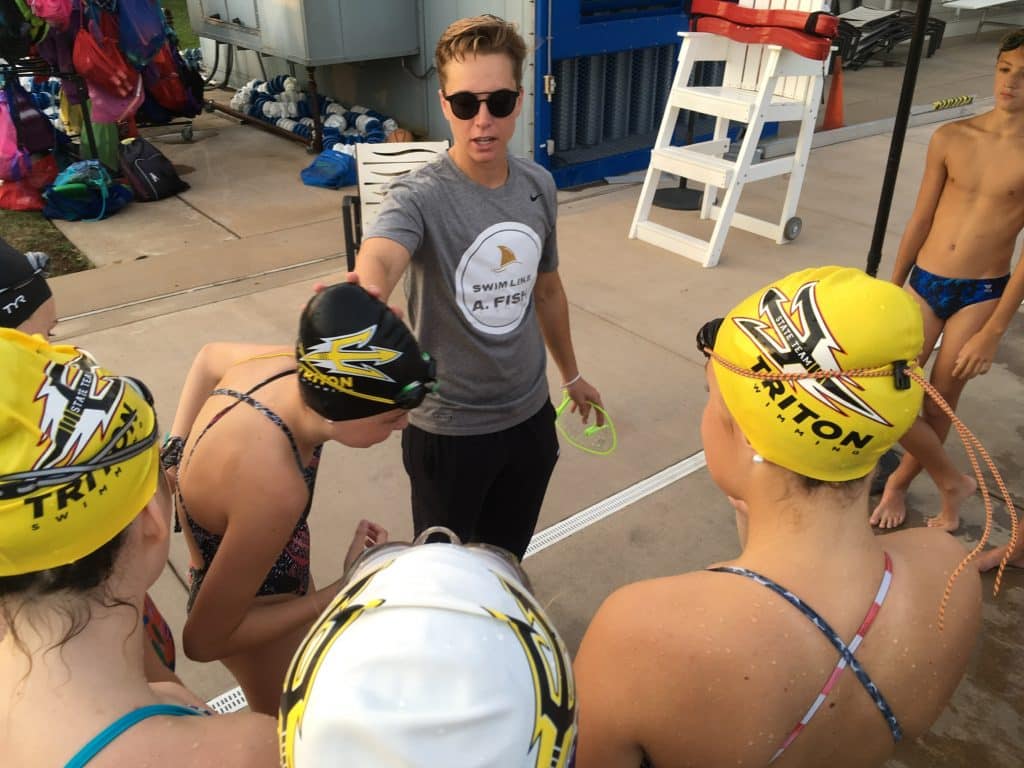Why Is Dryland Training Important for Swimmers? In today’s blog you’re going to find out! Welcome back to Part III of our WHY series! Here at SLAF, we love to ask the question WHY. Understanding your WHY and understanding WHY what you’re doing matters is the fastest shortcut in the brain to getting better. We started this series by exploring Finding Your Personal WHY. Then, we moved onto WHY Video Analysis is the Most Important Tool. Now, we’re setting our sights on WHY Dryland? This question is particularly important because it applies to both the coach and the swimmer.
Coaches tend to have the problem of failing to prioritize Dryland training when there’s so much that needs to be done in the water. Swimmers tend to have the problem of not training as hard during Dryland compared to what they do in the water. We’re here to convince you why both are flawed mindsets because of how much Dryland training can improve your swimmers and overall team.
Why Is Dryland Important for Swimmers? Because of What It Provides
1. Muscle Load
Swimming inevitability takes away some of gravity’s strains because of the buoyancy of the water. The amount of gravity that is usually on a person when existing in their day to day life just isn’t there because of being horizontal and suspended in water. That’s why some people describe their experience of swimming as “weight-less.”
However, for the purpose of muscle building, taking away the effects of gravity might not be the best option. When a swimmer is training on land and taxing their muscles, there is a greater strain required. That’s why bodyweight and dumbbell exercises can be incredibly effective. It causes the body to adopt to a greater stressor and to re-build the muscle faster. It’s also a way to target certain muscle groups or different firing muscular firing patterns than what swimmers do in the water. A body that is overall stronger is a body that is overall faster.
2. Variety In Their Training
To answer the question “Why is dryland training important for swimmers,” we have to look at the challenges of a swim season from a swimmer’s point-of-view. Swimming really tests a person’s ability to stay disciplined. Repeating the same exercise every day, swimming up and down the pool, can wear on a person’s motivation. Although we must work to strengthen our discipline muscle, Dryland is a great way to help a swimmer maintain their motivation.
Adding variety to your training keeps it interesting. Something as simple as changing the scenery and the sensory landscape can keep a swimmer engaged and working hard. When I notice my swimmers (especially my littles) are just going through the motions, I like to call an audible and get some work done on deck. I pull them out of the water and work on the same technique or muscle group I was originally planning to, just out of the water. It’s amazing how quickly the smiles come back, the minds become engaged, and progress is made.

For example, I had asked my swimmers to do a kick set to work on their leg stamina. It was clear they weren’t engaged in the purpose of the set. I pulled them out of the water and had them perform some box-sits (or really bleacher sits) to activate the muscles instead. They got re-engaged right away!
3. Connecting with Teammates and Building Team Culture
The best teams in the world do Dryland well. Why? Because it not only strengthens a swimmer’s muscles, but their bonds to their teammates. Dryland allows for more and different type of interaction among teammates. Getting teammates out of the water provides a lot more opportunity to talk to one another, and to you. This face to face time is invaluable. Not only that, but Dryland can consist of partner and group exercises, which allows swimmers to practice working together and building trust with one another. Most swimmers aren’t used to seeing each other’s faces while working out (since they’re usually pointed down towards the bottom of the pool). This time out of the water is crucial for building and maintaining a great team culture!
Prioritize
It’s important to bring up a common objection that I get here, which is that because of deck space, coaches don’t have the time for Dryland. In my experience, the solution to this problem is to get creative. If you’ve only got a few minutes before the deck space gets overrun with other groups, then switch from 3 longer Dryland sessions every week to 5 short ones. I’ve even seen coaches pull swimmers out to do Dryland in the middle (or even after) their practices if that’s what would allow them the space to do so (although, be careful on the wet deck!). The point is that if you’re coming up against a road block, apply some creativity to your logistics and still reap the benefits Dryland provides.
Here’s a few ways to Prioritize Dryland using SLAF’s products:
Custom Strength and Conditioning Workouts
WHY is Dryland Training Important for Swimmers?
In summary, Dryland is a tool that can exponentially grow your swimming potential when you invest in it. Although it can be easy to let Dryland fall by the wayside during the stress and craziness of the day to day, don’t let it. Invest in yourself, your swimmers, and your team culture by taking time on deck to get better today!
Until next time,
Abbie Fish and the Swim Like A. Fish Team

One Response